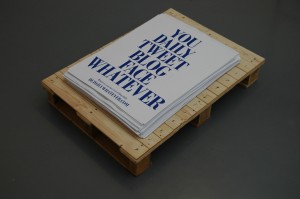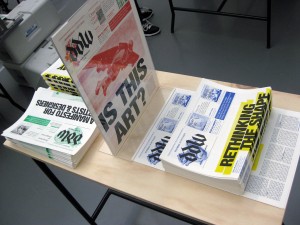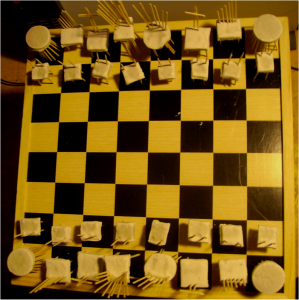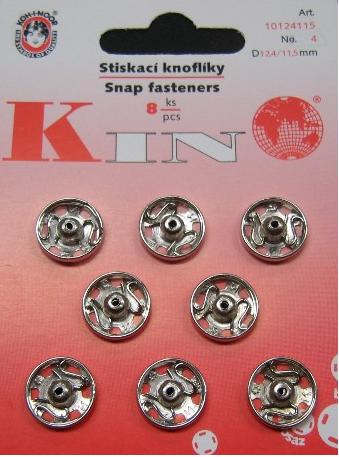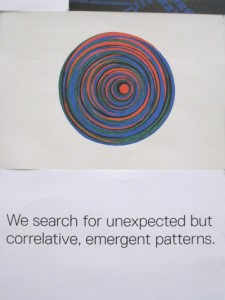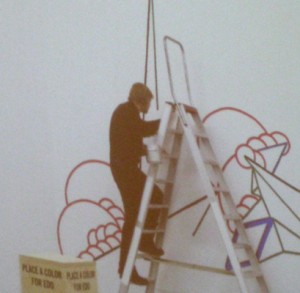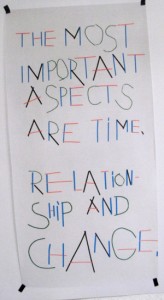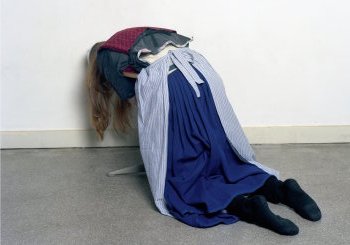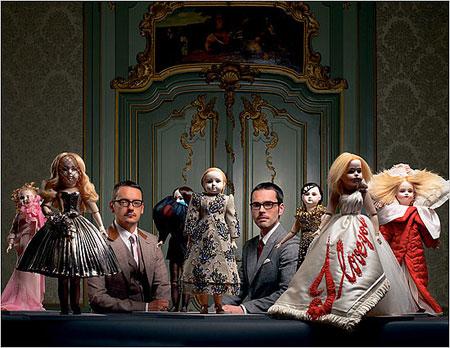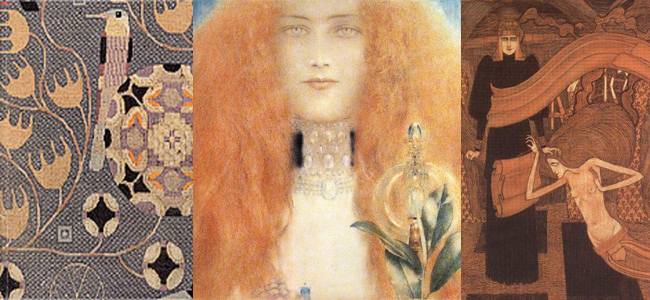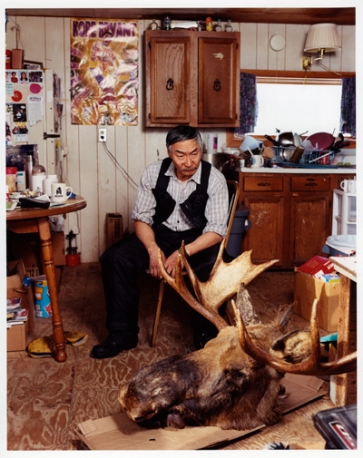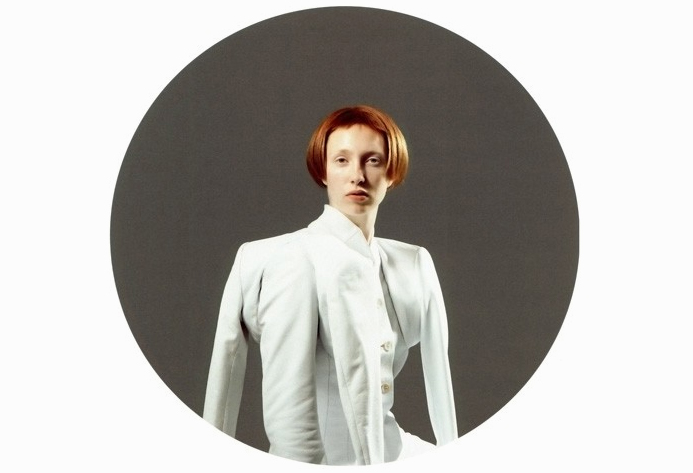 What is the connection between Experimental Jetset, Johannes Schwartz and Herman Verkerk?
What is the connection between Experimental Jetset, Johannes Schwartz and Herman Verkerk?
Besides the fact that they are all based in Amsterdam, that they can speak Dutch, they all like to create beautiful and witty designs or images, they like to question their practice, they like to experiment and they actually teamed up together several times, another crucial connection appeared recently: the three of them are going to participate to a collective interview project…
After discovering more about their work, it became obvious that there was something interesting to investigate about their collaboration. What make several people or entities meet and work together? Are they alike or on the contrary, are they so different that they complement each other…?
For that reason, we interviewed them using the same process:
>> AN INTERVIEW IN A SUITCASE
We visited Johannes Schwartz, Experimental Jetset and Herman Verkerk, carrying with us this suitcase. Inside the suitcase, many different objects. Each interviewee was invited to open the suitcase, to browse through it and to freely react to the objects they found in it.
The results were surprising, exciting and very interesting. But when it comes to decide what brought the three of them together and where they meet… you are left free to listen to the interviews and to make up your own mind!
Experimental Jetset, Johannes Schwartz or Herman Verkerk

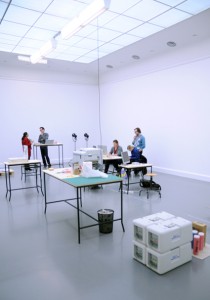 De Daily Whatever was founded in 2006, as a free and independent newspaper. The newspaper was being produced ‘on the spot’ during the Dutch Design Week in Eindhoven. The main motivation for starting up the newspaper was to inform the public on design topics and to stimulate the local design climate by bringing exciting theory and hereby provoking debate which in return can stimulate innovation.
De Daily Whatever was founded in 2006, as a free and independent newspaper. The newspaper was being produced ‘on the spot’ during the Dutch Design Week in Eindhoven. The main motivation for starting up the newspaper was to inform the public on design topics and to stimulate the local design climate by bringing exciting theory and hereby provoking debate which in return can stimulate innovation.